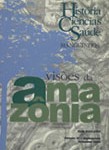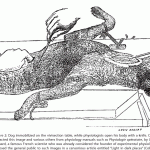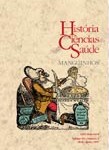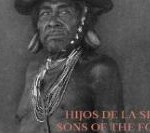July 2016
Translated and edited from Divulgar é preciso: lugar de ciência é na rede social / Marina Lemle
According to recent data, the average Brazilian spend almost five hours a day in the Internet. As with all publications, scientific journals also need to adapt to this rapidly changing media environment.
This issue was debated in the panel “The role of social media in scientific journals” on the last day of the workshop “Challenges of interdisciplinary journals”, hosted by HCS-Manguinhos from 22 to 24 June 2016 at Fiocruz, in Rio de Janeiro.

Germana Barata (blog Ciências em Revista – Unicamp), Bruno Leal (blog Café Historia), Ildeu de Castro (moderator), Roberta Cerqueira (HCSM) and Matthew Brown (Bulletin of Latin American Research).
The panel, moderated by Ildeu de Castro, had four Brazilian editors – Roberta Cerqueira (HCSM), Germana Barata (blog Ciências em Revista – Unicamp), Bruno Leal (Café Historia) – and a British editor, Matthew Brown (Bulletin of Latin American Research).
Germana Barata, editor of the blog Ciências em Revista, argued that working with science communication in social networks is a good strategy for the journals. She said that when an article is well publicized, it gets more views and this also reflects in an increase in submissions for the journal.
“Acting on social networks makes posible to reach an audience of different academic fields and a larger audience as well. If the article reaches more people, it is more likely to be read and quoted,” she said.
A pioneering and successful case of science communication in the area of history is the blog Café História, edited by the journalist and historian Bruno Leal. Developed eight years ago in the Ning platform, which allows interaction with the users, the website had initially two aims: use tools of digital media to promote the free exchange of ideas between professors, researchers and students and disseminate historical researches among historians and a large audience (not experts).
From 2008 to date, 60,000 people have registered on Café História. In 2009, it launched a Twitter profile, which now has 24,000 followers, and in 2010 a Facebook page, which has amazing 340,000 followers. In 2013, they created a youtube channel, with 5,800 subscribers and 38 posted videos.
The experience of the journal História, Ciências – Manguinhos with blogs and social networks, started in 2013. Roberta Cerqueira, executive editor of the journal, explained that HCSM blogs in Portuguese and English/Spanish stores the posts published in its Facebook and Twitter profiles. Besides publishing summaries of articles of each new issue, the blogs also publish interviews and general posts on current topics related to previous articles.
Roberta also explained that the authors are encouraged to share the posts about their articles in their own pages, to increase the number of sharing. She has also highlighted other advantages of online tools:
“we have always been curious to know our audience’s profile. With the blog and social networks, we had the opportunity to know who reads our journal, their academic degree and the topics that interest them most,” she said.
Roberta also emphasized the potential of Twitter on science communication. She said that Twitter is often used by overseas researchers, but it is not that successful in Brazil. “We have reached a far more international audience on Twitter,” added.
According to Ildeu Moreira, associated editor of HCS-Manguinhos, videos and gifs have a better sharing potential. Ildeu also perceives the public’s an interest for science characters, such as Einstein and Darwin, which is observed by the amount of shares of the posts on these topics.
“Social networking is an important tool to point out towards a citizen science,” he said.
With an opposing view, Mathew Brown, co-editor of Bulletin of Latin American Research is a bit suspicious of Facebook’s potential, but recognizes the role of Twitter as a tool to disseminate new articles. The editor believes that internet offers many possibilities beyond social networks, and showed the website of the Quipu Project, about the family planning programme implemented by Fujimori in Peru that resulted in the the sterilisation of 272,028 women and 22,004 men in only 4 years.
Read all the stories about the workshop in Fiocruz:
Editores britânicos e latinos discutem financiamento e acesso aberto a revistas científicas
Falta de investimento é comum a todos, mas as soluções apontam para caminhos diferentes
‘Internacional não é colonizado’
Em workshop sobre revistas interdisciplinares na Fiocruz, Regina Horta, editora da Varia Historia, discute com editores estrangeiros a internacionalização dos periódicos científicos
Para acelerar a comunicação científica, adiós ineditismo
Em workshop na Fiocruz, Abel Packer, coordenador do SciELO, defendeu as publicações individuais de artigos antes do lançamento das revistas e em repositórios para revisão por pares
Do mimeógrafo às redes sociais, um caminho de acesso aberto
Editor de História, Ciências, Saúde – Manguinhos por mais duas décadas, o historiador Jaime Benchimol participou de workshop sobre revistas interdisciplinares na Fiocruz
Editores debatem desafios de periódicos interdisciplinares
Workshop realizado na Fiocruz, no Rio, foi promovido por HCS-Manguinhos e Journal of Latin American Studies com apoio da British Academy
Los desafíos actuales de las publicaciones científicas
El objetivo del workshop fue proporcionar el intercambio de experiencias y ideas para enfrentar los desafíos.
The Brexit and its consequences for science
Mathew Brown, co-editor of Bulletin of Latin American Research analyzes the consequences of this exit for science and the academic community.















